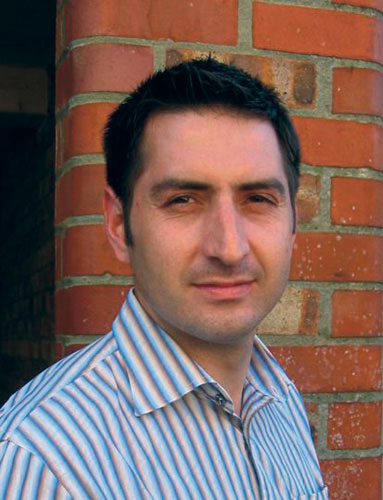Savile row in a primark world?
Virtual agencies offering bespoke ‘total solutions’ for each brand or campaign are the future, Simon Barbato argues. They can also be a lot cheaper than traditional creative groups

The choice for design and marketing buyers used to be simple. If they wanted to advertise their brand, they used an advertising agency. If they wanted to repackage their biscuits, they rang up a design consultancy. If they wanted to send out a mailshot, they called the direct marketing agency. The only confusion was in the minds of the creative groups themselves, which didn’t quite know where to stop – ambitious account handlers would try to steal some of the territory which they regarded as arguably theirs.
Then came integration, with each discipline working together to produce measurably better results. And that is when the problems started – moving from an integrated approach from clients, with marketing directors banging the heads of squabbling agencies together, through to the invention of integrated agencies that could do everything in a seamless fashion.
And finally came media-neutral agencies, attempting to solve marketing problems using whatever discipline or disciplines would work best. No matter that they started life as ad agencies, and that invariably their strategies led with fabulously glossy and glitzy – not to mention very profitable – above-the-line solutions.
There are certainly some creative groups large enough to supply solutions that reach across disciplines. But the one-size-fits-all solution is like an old Hepworths suit that just comes in small, medium or large.
Relationships with clients also changed. Personal relationships were left behind because of clients’ thirst for results, efficiency and value. Once friends, clients and consultancies are now professional partners.
Not to forget consumers. As media channels have fragmented, brands have reacted by targeting very specific groups. Each brand and campaign requires a specific set of skills which agencies – despite constant reinvention and restructuring – have struggled to find, rarely becoming the sought-after ‘total solution’.
As clients have become leaner, so, too, marketing services groups need to be both leaner and smarter in the way they work.
All this has given rise to the ‘virtual’ consultancy, which uses the appropriate remote resources to deliver a bespoke, cost-efficient solution for every client, brand and campaign. The key element of this concept is an extensive network of known contacts or ‘friends’ – a constantly evolving bank of talent, orchestrated by a brand strategist who understands the client’s challenges and builds exactly the right team to deliver against those needs – the total solution.
This has become a possibility as the reservoir of people working either as freelances or in small groups has grown substantially. The creative labour market, not to mention communications, has changed dramatically, and the virtual agency maximises the benefits arising from this. Instead of being hemmed in by red tape and rigid structure, it combines technology and experience to deliver better results more efficiently at a lower cost, with overheads up to 40 per cent less than traditional agencies.
Clients also benefit from the talent being stakeholders, directly rewarded according to their work. It may mean the end of the cyclical approach of boom and bust.
It’s a good theory, but does it work? Charles Davies, director of brand and marketing at Yahoo! Europe, believes it gives him access to more talent than a traditional agency, with a strategic hub co-ordinating a team whose combined skills they would not have found in any other way.
In the virtual agency, the network of friends can, and perhaps should, be global – Europe, the US and Australasia all have a different pool of talent. This is the idea behind Mr B & Friends. Different friends come together depending on the needs of the client. Friends also recommend other friends, so the network continues to grow, allowing a greater diversity of clients to be serviced. But, importantly, this is not just a loose affinity of talented individuals, it is a legal entity with everything bound up in a legal framework that helps ensure quality of service.
Is this the solution for every brand? No. Some are more progressive than others, but for those that are willing to embrace a better and more cost-efficient way of doing things, it’s the closest thing to a tailored suit from Savile Row that you’ll get in the new marketing world.
Simon Barbato is founder of Mr B & Friends
GOING VIRTUAL
• Uses remote resources to deliver bespoke, cost-efficient solutions to clients
• Requires an extensive bank of talent orchestrated by a brand strategist
• Delivers the ‘total design solution’
• Lowers overheads by up to 40% less than traditional creative groups
-
Post a comment




